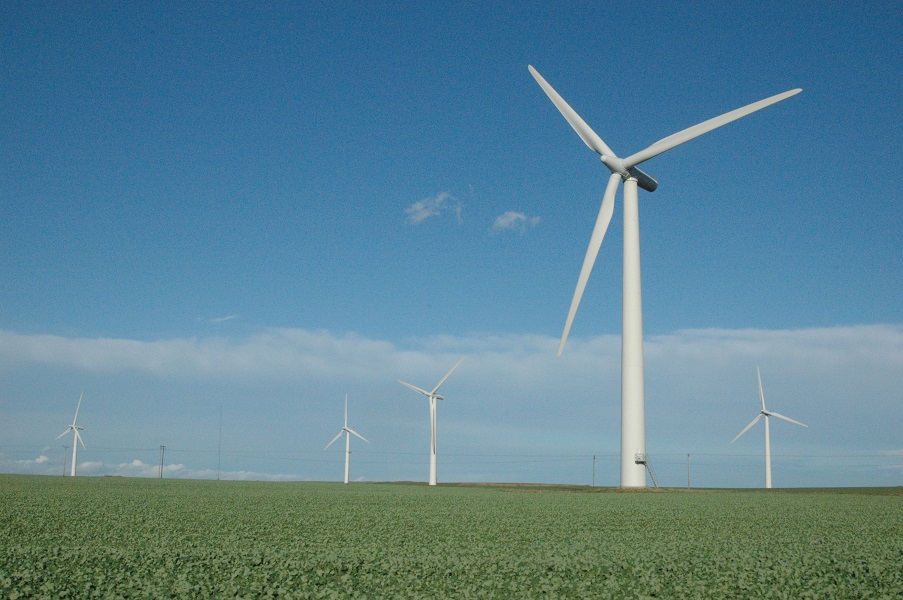Wind turbines may be beneficial for crops, U.S. study shows

A multi-year study led by an Iowa State University scientist suggests that turbines commonly used in the state to capture wind energy may have a positive effect on crops. 
Gene Takle, a professor of agronomy, and geological and atmospheric sciences, said tall wind turbines disbursed throughout a field create air turbulence that may help plants by affecting variables such as temperature and carbon dioxide concentrations.
Takle and his team installed research towers on a 200-turbine wind farm between Radcliffe and Colo. The research towers collected data from 2010 to 2013 on wind speeds and directions, temperature, humidity, turbulence, gas content and precipitation.
The project aimed to discover how the turbulence created when wind moves through the turbines affects conditions at ground level where crops grow.
Takle said the team’s data showed that the wind turbines had a measurable impact on several key variables that affect growing conditions. It’s more difficult to pin down whether those changes affect crop performance, but Takle said the turbines may make growing conditions more favorable for corn and soybeans.
“On balance, it seems turbines have a small, positive impact on crops,” he said.
Takle said turbines can change the temperature in the areas around them. The research team’s data show that turbulence produced by wind turbines leads to temperatures about a half degree cooler during the day and between a half to a full degree warmer at night.
He explained the temperature change was due to the turbulence mixing air at different elevations. The mixing cools the ground level during the daylight hours, like a fan blowing on a wet surface, Takle said.
But at night, as the ground loses heat, the mixing brings warmer air aloft down to ground level, resulting in a net warming effect.
The turbulence also suppresses the formation of dew and dries the crops, Takle said, which could combat harmful molds and fungi.
The turbulence, and the associated changes in air pressure at ground level, also may enrich the carbon dioxide content in the air surrounding crops, which could make the plants grow more efficiently, he added.
While it seems wind turbines impact factors that influence growing conditions in a field, Takle said further research would be needed to establish if those changes actually improve plant performance.
“The next step would be to answer if this turbulence changes biomass uptake of plants, or if it affects plant size or functions or yield,” he said.
“It’s going to be much harder to find those answers because of all the other factors at play in a field, such as variations in soil quality or precipitation.”
The research was supported by a US$1.3 million grant from the National Science Foundation.
Photo: Wikimedia Creative Commons












































